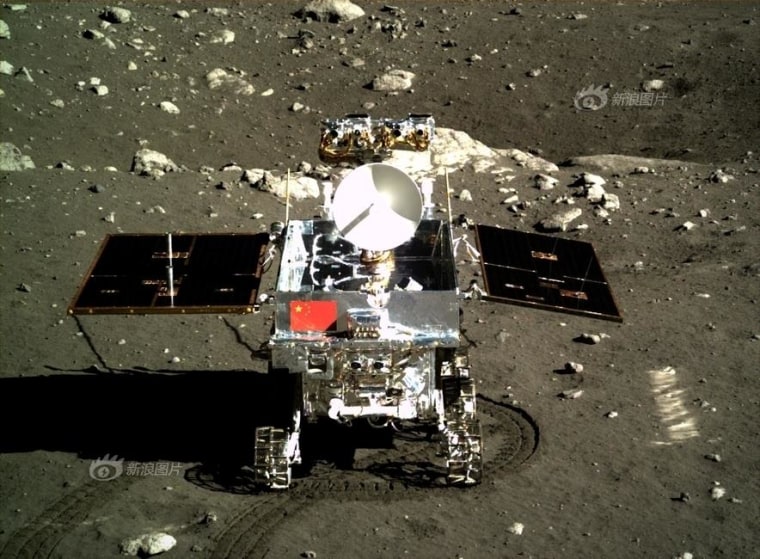Newly published results from China's first lunar rover suggest that the moon's past was livelier and more complex than previously thought.
China's Yutu moon rover found evidence of at least nine distinct rock layers deep beneath its wheels, indicating that the area has been surprisingly geologically active over the past 3.3 billion years.
"Two things are most interesting," said Long Xiao, a researcher at the China University of Geosciences in Wuhan, who is the lead author of the study detailing the new findings.
"One is more volcanic events have been defined in the late volcanism history of the moon," Xiao told Space.com via email. "Another is the lunar mare [volcanic plain] area is not only composed of basaltic lavas, but also explosive eruption-formed pyroclastic rocks," Xiao added. "The latter finding may shed light on … the volatile contents in the lunar mantle." [The Moon: 10 Surprising Lunar Facts]

Yutu (whose name means "jade rabbit") is part of China's Chang'e 3 moon mission. Chang'e 3 delivered Yutu and a stationary lander to the lunar surface on Dec. 14, 2013 — the first soft touchdown on the moon since the Soviet Union's Luna 24 mission in 1976.
Yutu traveled 374 feet (114 meters) on the moon in a zigzag fashion before a glitch ended its travels in January 2014.
The rover was equipped with cameras and three main scientific instruments — the Lunar Penetrating Radar, the Visible Near-Infrared Spectrometer and the Active Particle-Induced X-ray Spectrometer. The new study, which was published online Thursday in the journal Science, reports results from the camera and the radar instrument, which can probe about 1,300 feet (400 meters) beneath the moon's surface.
The rover's observations suggest that the composition of its landing site is different from that of the places visited by NASA's Apollo missions and the Soviet Union's Luna program.
While Yutu isn't beaming home any new data these days, the scientific community can expect to hear about more discoveries from the mission shortly, Xiao said.
— Mike Wall, Space.com
This is a condensed version of a report from Space.com. Read the full report. Follow Mike Wall on Twitter and Google+. Follow Space.com on Twitter, Facebook or Google+.